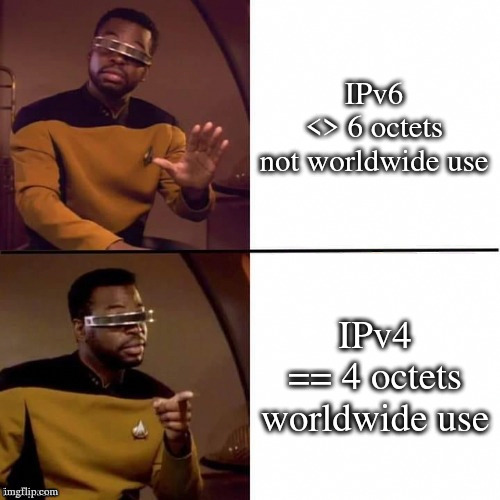this post was submitted on 19 Jun 2024
314 points (85.7% liked)
Programmer Humor
19548 readers
1146 users here now
Welcome to Programmer Humor!
This is a place where you can post jokes, memes, humor, etc. related to programming!
For sharing awful code theres also Programming Horror.
Rules
- Keep content in english
- No advertisements
- Posts must be related to programming or programmer topics
founded 1 year ago
MODERATORS
you are viewing a single comment's thread
view the rest of the comments
view the rest of the comments

I think it’s worth taking the time to learn IPv6 property. If you have a good understanding of IPv4 it shouldn’t take you more than an afternoon.
Eliminating NAT and just using firewall rules (ie what NAT does behind your back) is incredibly freeing.
I don’t get people complaining about typing out IPs. I like to give all of my clients full FQDNs but you don’t have to. Just using mDNS would be enough to avoid typing a bunch of numbers.
Maybe I have Stockholm Syndrome, but I like NAT. It’s like, due to the flaws of IPv4 we basically accidentally get subnets segmented off, no listening ports, have to explicitly configure port forwarding to be able to listen for connections, which kinda implies you know what you’re doing (ssshh don’t talk about UPnP). Accidental security of a default deny policy even without any firewalls configured. Haha. I’m still getting into this stuff though, please feel free to enlighten me
Instead of nat and port forwards that rewrite, your firewall is set to only forward specific traffic, exactly how'd you'd configure outbound forwarding on a nat network (but opposite directions)
Open forwarding is a router, not a firewall